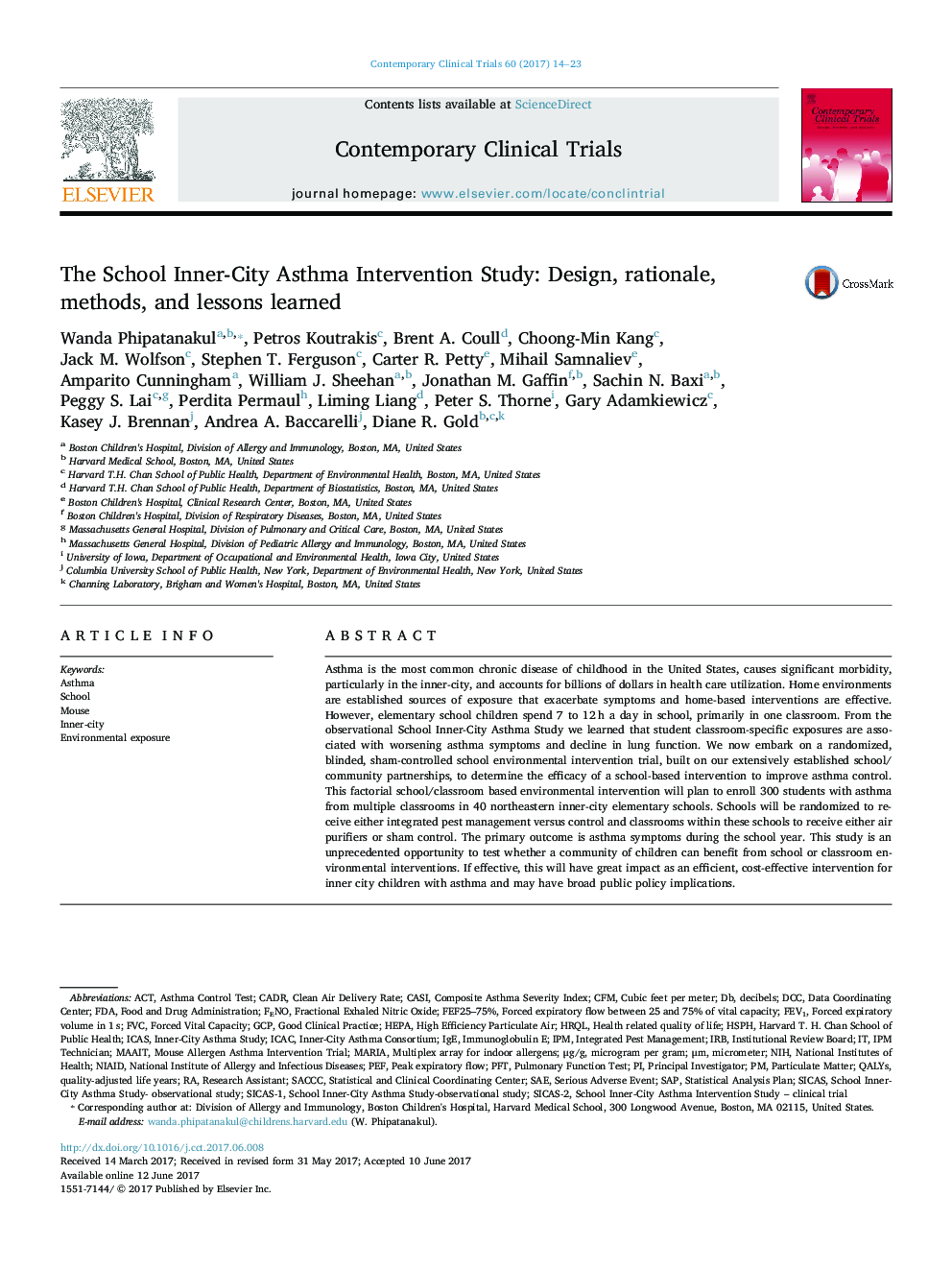| Article ID | Journal | Published Year | Pages | File Type |
|---|---|---|---|---|
| 5678549 | Contemporary Clinical Trials | 2017 | 10 Pages |
Abstract
Asthma is the most common chronic disease of childhood in the United States, causes significant morbidity, particularly in the inner-city, and accounts for billions of dollars in health care utilization. Home environments are established sources of exposure that exacerbate symptoms and home-based interventions are effective. However, elementary school children spend 7 to 12Â h a day in school, primarily in one classroom. From the observational School Inner-City Asthma Study we learned that student classroom-specific exposures are associated with worsening asthma symptoms and decline in lung function. We now embark on a randomized, blinded, sham-controlled school environmental intervention trial, built on our extensively established school/community partnerships, to determine the efficacy of a school-based intervention to improve asthma control. This factorial school/classroom based environmental intervention will plan to enroll 300 students with asthma from multiple classrooms in 40 northeastern inner-city elementary schools. Schools will be randomized to receive either integrated pest management versus control and classrooms within these schools to receive either air purifiers or sham control. The primary outcome is asthma symptoms during the school year. This study is an unprecedented opportunity to test whether a community of children can benefit from school or classroom environmental interventions. If effective, this will have great impact as an efficient, cost-effective intervention for inner city children with asthma and may have broad public policy implications.
Keywords
FEV1SAECFMPFTQALYsFeNOICACHRQLGCPNIHDCCIRBFDAFVCClean air delivery rateμMPEFACTIPMCADRNIAIDInner-City Asthma ConsortiumIgEComposite Asthma Severity IndexHEPAFEF25–75%ICAsAsthmafractional exhaled nitric oxideImmunoglobulin EPulmonary function testAsthma control testCASIEnvironmental exposurePeak expiratory flowForced expiratory volume in 1 sdecibelsparticulate matterhigh efficiency particulate airFood and Drug AdministrationQuality-adjusted life yearsinner-citySAPforced vital capacitygood clinical practiceSerious adverse eventNational Institutes of HealthMaRIAPrincipal investigatorSchoolIntegrated pest managementdata coordinating centerInner-City Asthma StudyResearch assistantNational Institute of Allergy and Infectious DiseasesMousemicrometerinstitutional review boardhealth related quality of life
Related Topics
Health Sciences
Medicine and Dentistry
Medicine and Dentistry (General)
Authors
Wanda Phipatanakul, Petros Koutrakis, Brent A. Coull, Choong-Min Kang, Jack M. Wolfson, Stephen T. Ferguson, Carter R. Petty, Mihail Samnaliev, Amparito Cunningham, William J. Sheehan, Jonathan M. Gaffin, Sachin N. Baxi, Peggy S. Lai, Perdita Permaul,
